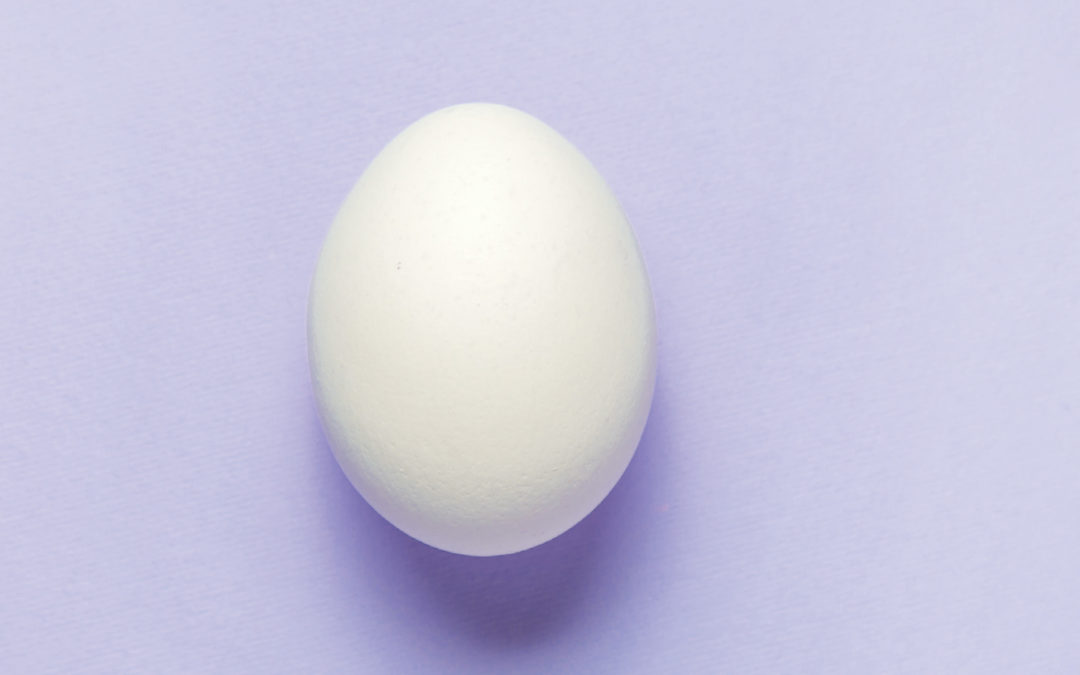by Heidi Haverkamp—
An egg doesn’t seem like much. Small enough to sit snugly in your palm in a plain white or brown shell, available to buy in any grocery store, convenience store and even some gas stations, an egg is one of the most unassuming, common foods we know. But at Easter time, eggs of all sizes and colors appear everywhere. They are made, hidden, gathered and loved by Christians and non-Christians alike to celebrate the holiday.
How did this happen? Eggs are part of the springtime holiday in many religions: An egg is placed on the Jewish Seder plate for Passover, and decorated eggs are shared during the Persian New Year. The connection is natural: As there are more and more hours of daylight in the spring, poultry lay more eggs. Also in springtime, when the food stores of the previous harvest are depleted after a long winter, the return of a steady supply of eggs is a welcome source of nourishment before gardens or fields are producing much or animals are big and fat enough for butchering.
Eggs are also a miraculous incarnation of new life: A seemingly inanimate object, resembling a stone or sealed tomb, cracks open to reveal a living, breathing creature. Even an egg cooked for your plate is beautiful: a pure white and gold “chapel,” as poet Anne Sexton once wrote about her breakfast. An eggshell is an irresistible canvas for decoration, whether dunked in cups of dye on your kitchen counter; traced with pencils, crayon, beeswax or markers in simple or intricate patterns (think of Ukrainian Easter eggs); or covered with paper shapes, glitter and even gold leaf. (In 1290, King Edward I of England had 450 eggs gilded to be given as gifts.)
It was during the Victorian era, when childhood and family life began to be especially cherished, that dying and hiding eggs became an Easter activity for children. The first chocolate Easter eggs appeared in this era, too. Today, however, Easter eggs most often are either chocolate or plastic eggs, not dyed chicken eggs. Plastic eggs (which can be filled with candy, money or tiny toys) and chocolate eggs are more common these days because they are simpler to prepare, shelf-stable, and more exciting to eat or crack open for most kids than a hardboiled egg. With our busy lives and schedules, who’s to argue with making Easter easier for families and congregations? On the other hand, plastic eggs create more landfill waste if they are not reused each year, and a plastic egg doesn’t have the same, physical connection to new life that a real egg has.
Still, many families and churches who use plastic eggs for their Easter egg hunts have told me they also dye hardboiled eggs, both because they see it as part of tradition and because it’s fun. I don’t have children of my own, but I haven’t let that stop me from decorating Easter eggs for my own home. I’ve colored cups of vinegar with the classic PAAS tablets (which, it amazed me to learn, have been on the market since 1880, when a Newark pharmacist began selling them from his shop), and I have tried simple, natural dyes, using pantry items like purple cabbage, herbal tea bags, beets and turmeric.
When I learned about the old Orthodox tradition of dying eggs red using yellow onion skins, I couldn’t quite believe it would work, so I had to try it. To my astonishment (see the recipe that follows), onion skins turned white eggs a dark, mottled shade of red, impossible to describe. Meanwhile, in my research about red eggs, I also learned about the legend of Mary Magdalene and her red egg, well-known in the Orthodox Church and the story most often told to explain the tradition for dying red eggs at Easter.
In this legend, Mary Magdalene decided to seek an audience before the Roman Emperor, Tiberius Caesar. Anyone who appeared before Caesar was expected to bring a gift, so Mary Magdalene brought a plain, ordinary egg. She came before the imperial throne holding out the egg in her hand and greeting Tiberias, declaring: “Christ is Risen!” She told him about her teacher and savior, Jesus, and the unfair treatment and death penalty he’d received from Caesar’s own governor, Pontius Pilate. She also told him how Jesus had risen from the dead and appeared, alive, to her and all his disciples.
Caesar responded with bored disbelief: “How can anyone rise from the dead? That’s as impossible as that egg in your hand turning red.” And, miraculously, the egg in her hand turned from white to a deep red. In Orthodox iconography, Mary Magdalene is often pictured holding up this red egg in her hand, sometimes with the words, “Christ is Risen,” spelled out on it in tiny letters.
Heidi Haverkamp is an Episcopal priest and author of Advent in Narnia and Holy Solitude, both published by Westminster John Knox Press. She lives in DeKalb, Illinois, with her husband, two cats and a beagle.
This article is excerpted from the April 2019 issue of Gather magazine. To read more like it, subscribe to Gather.



“When I learned about the old Orthodox tradition of dying eggs red using yellow onion skins, I couldn’t quite believe it would work, so I had to try it. To my astonishment (see the recipe that follows),” where is the recipe? Is it as simple as putting the skins in boiling water?
Hi, Jerri,
You can view the recipe in the April issue of Gather.
Sarah Carson
Associate editor
Thanks!